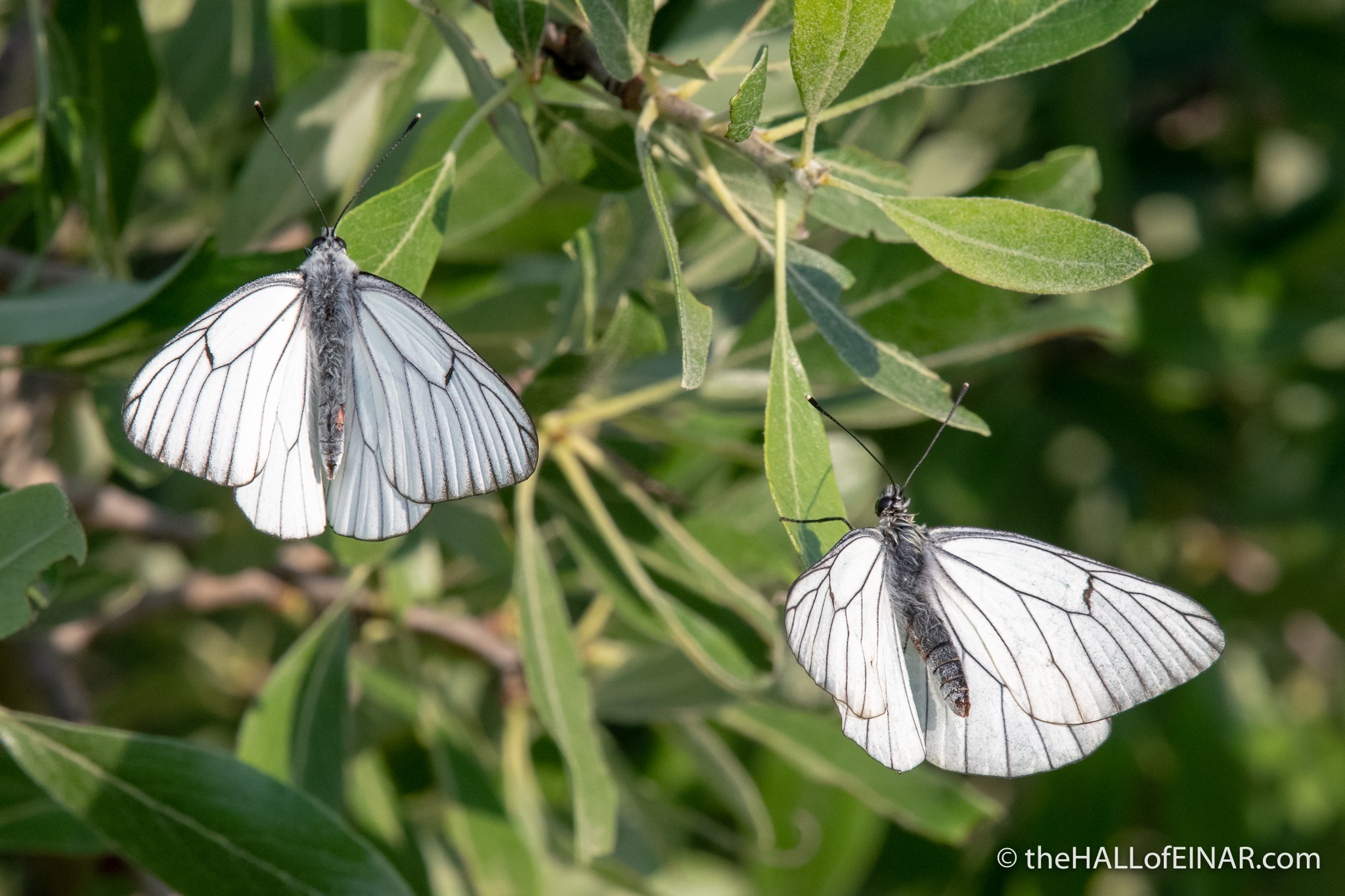Blue Blood and Black Veins
For a language with 180,000 words, the English language is seriously deficient when it comes to the natural world. Take the word extinct. It means ‘having no living members’. It means lost, died out, dead, defunct, no longer existing, no longer extant, wiped out, destroyed, exterminated or gone. It means as dead as a Dodo; or a Great Auk. When British people say a butterfly is extinct, what that usually means is that it has had a small reduction in its range so that it no longer occurs in Britain. We need another word which means ‘having no living members here‘.
That’s the case with the Black Veined White butterfly, Aporia crataegi. It has had a reduction in its range so that it no longer occurs in Britain.
The potential causes of its demise are always said to be: disease; poor autumn weather; mild winters; and increased bird predation. It was a series of wet autumns that finally resulted in it having no living members here in 1925. The real reason, however, is of course habitat destruction by British people.
Here it is in the Reverend Francis Orpen Morris’s The History of British Butterflies from 1853:
I love the text: “On the continent this Butterfly is so very common, and occurs in some seasons in such prodigious numbers, as to cause serious damage, in the caterpillar state, to gardens.”
According to the Reverend Morris, the Black Veined White occurred in Kent, Worcestershire, Northamptonshire, Hampshire, Surrey, Berkshire, Chelsea and Dorset when he published his History in 1853. Sir Winston Churchill attempted to reintroduce it in the gardens of his house in Kent after the Second World War. He enlisted the help of BBC radio’s ‘butterfly man’ Hugh Newman, and had caterpillars kept inside bags tied to the branches of Hawthorn trees, one of their food plants. When Hugh Newman’s instructions came to ‘remove the bags’, Churchill’s gardeners removed the bags and burned them, caterpillars and all. What he meant to say was ‘open the bags’. That’s semantic imprecision for you. What’s semantic imprecision? It’s when it’s not clear what your words mean.
Black Veined Whites need Hawthorn hedges, for their caterpillars to feast on, surrounded by nectar-rich fields of red clover, for the adults to sup. After the Second World War there were approximately 500,000 miles of hedge in England. By the 1990 that had more than halved to 236,000 miles. If not fields of clover, then just scrappy field edges with wild flowers will do, but even those are in short supply. Since the Second World War the number of wild flower meadows has declined by 97%. Still people blame the loss of this butterfly on the weather or birds.
I’m currently ‘on the continent’ and here it is, in prodigious numbers, in the butterfly state.
Black veined White butterflies – they still have living members – just not in Britain.




